WUPATKI NATIONAL MONUMENT
Explorers of the West in the 19th Century like John Wesley Powell marveled at the scattered ruins of pueblos and strange volcanic landscape that makes up the area called Wupatki one of the many National Monuments in Central Arizona. So did we.
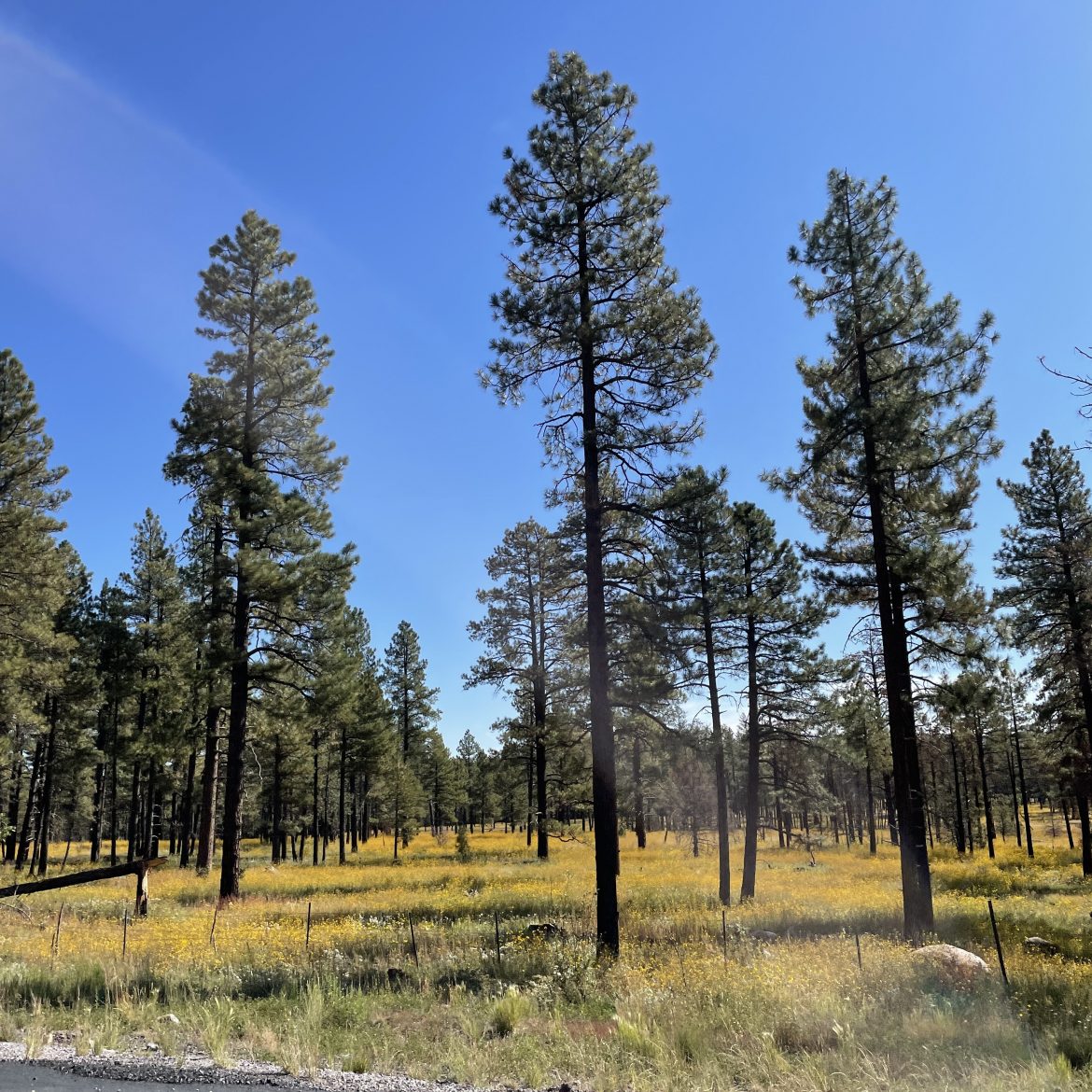
The scenic road from Sedona led us north winding around hairpin turns through Oak Creek Canyon and up over the Mongollan Rim at 8000 ft altitude. The road widened as we continued through wildflower-carpeted Ponderosa Pine woodlands to Flagstaff. Along the way there were stands where Native American silver jewelry was displayed for sale.
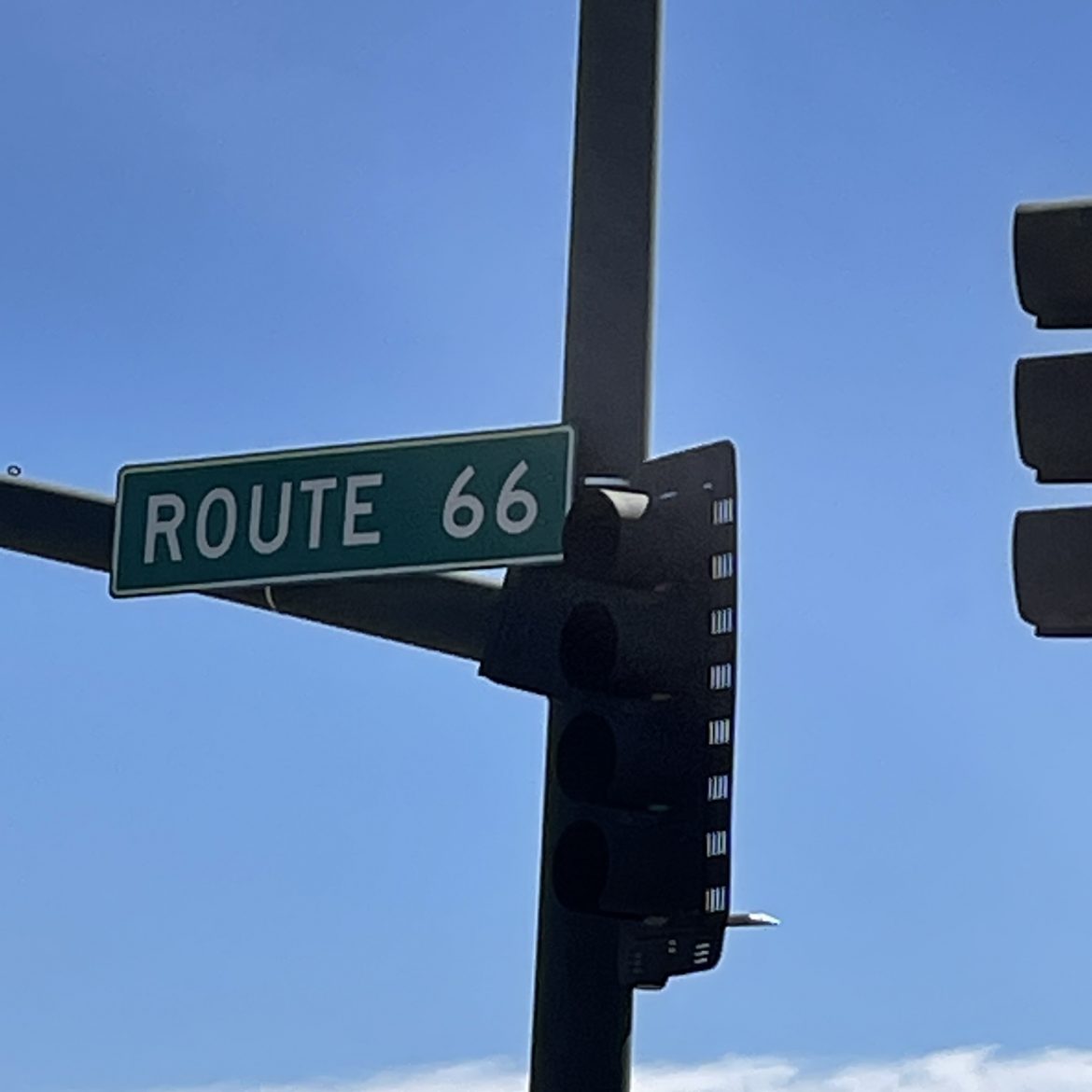
It was tempting to turn either directly east to Winona and Gallup or west to Barstow and San Bernadino as the lyrics of Nat King Kole’s wonderful song about Route 66 – which bisects Flagstaff – advises. But it was a day to get our kicks further north at Wupatki in the southwestern corner of the Colorado Plateau inhabited by much earlier travelers who followed a different open road. It is an area of high desert, a scrub and grassland where lava flows and the black cinder cone of Sunset Crater dominate the southern half of the natural scene and the remnants of ancient pueblos of the Wupatki complex dot the northern section of the landscape.
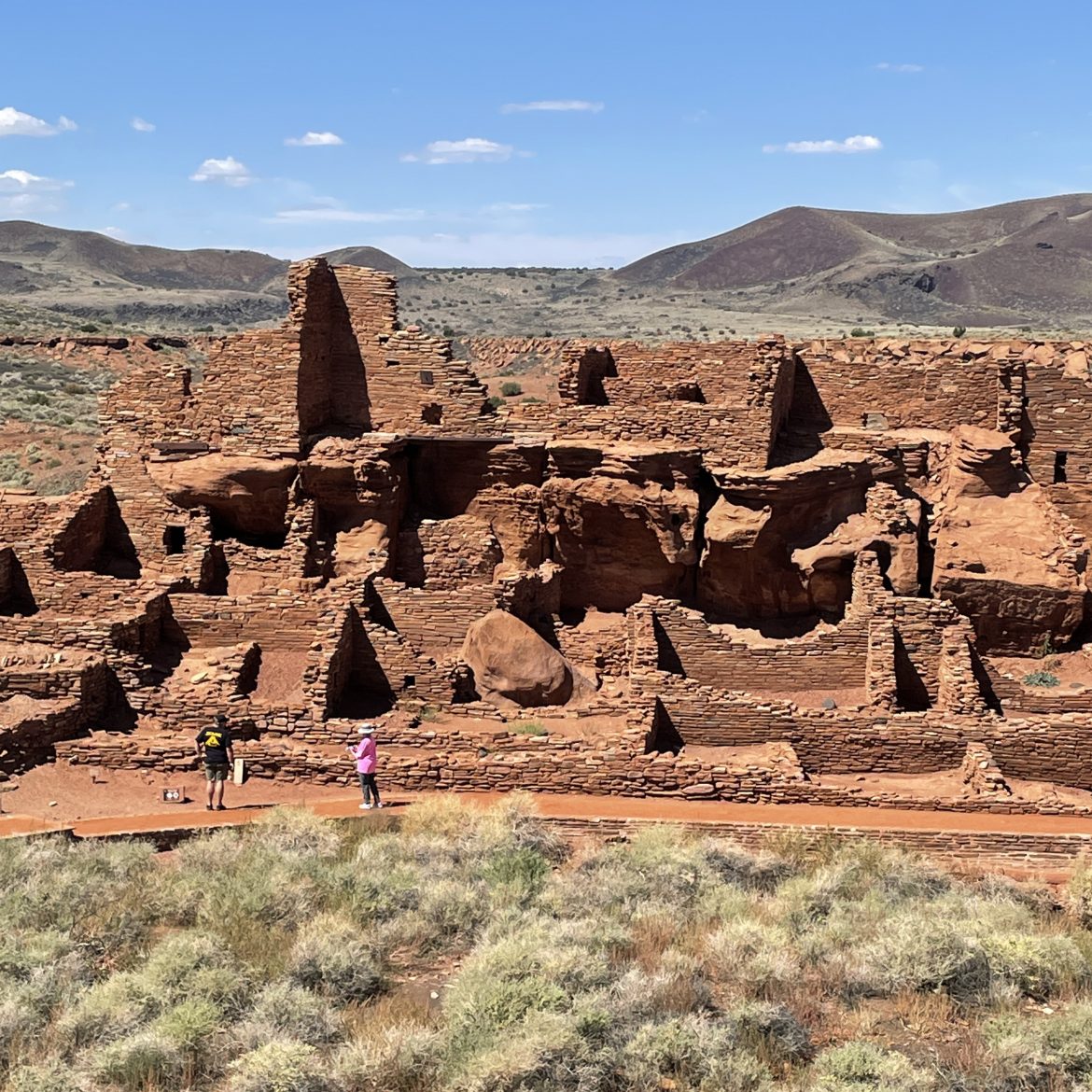
We turned off Highway 89, the road to the Grand Canyon and Lake Powell, to visit the pueblos – small ruins of several hamlets on the way to the Visitor Center and the Wupatki Pueblo, the biggest and best preserved in the Monument. Of the three National Monuments we visited on this trip it was by far the most spectacular and with its combination of red sandstone, black basalt and pale limestone slabs that make up the buildings, stark ruins against the deep blue sky.
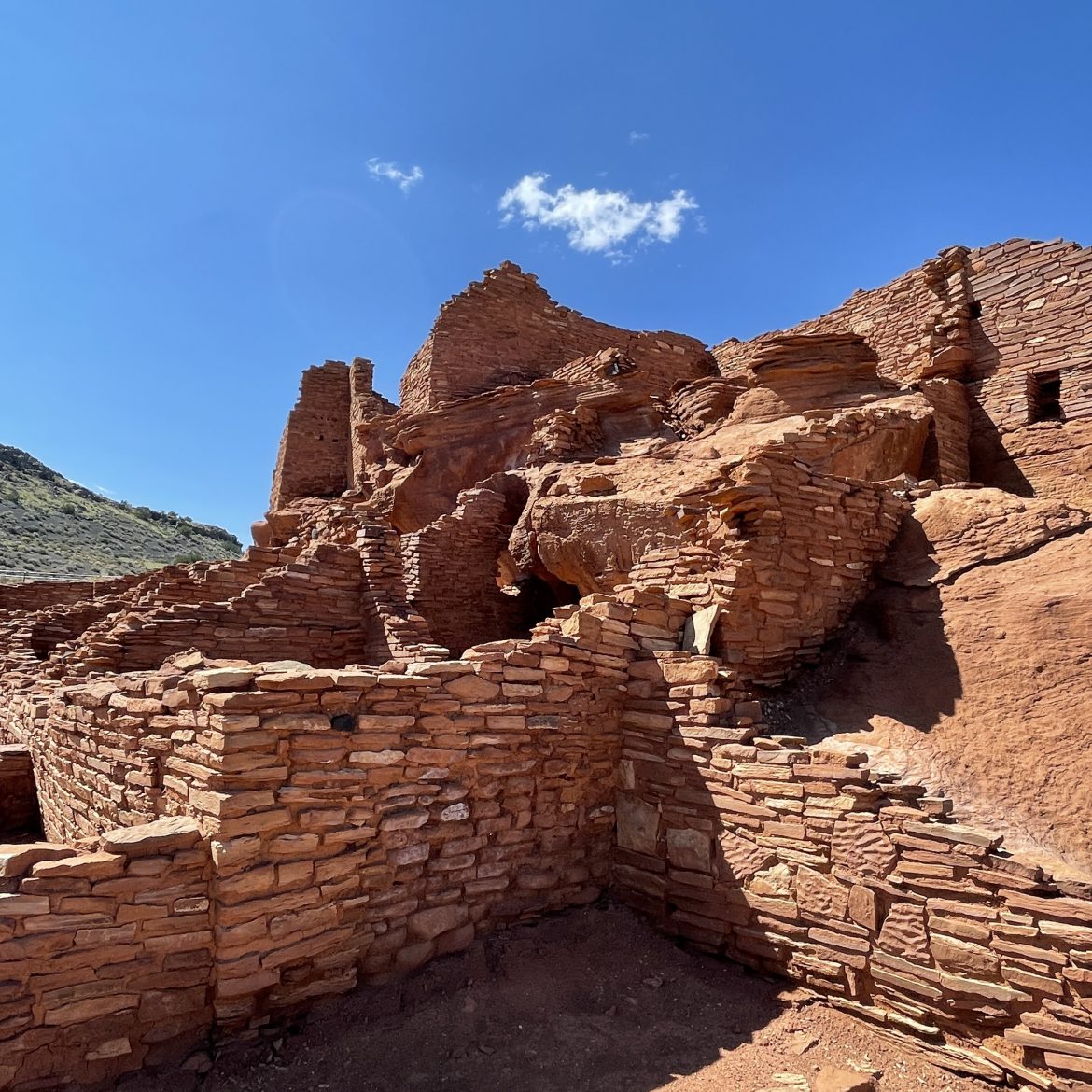
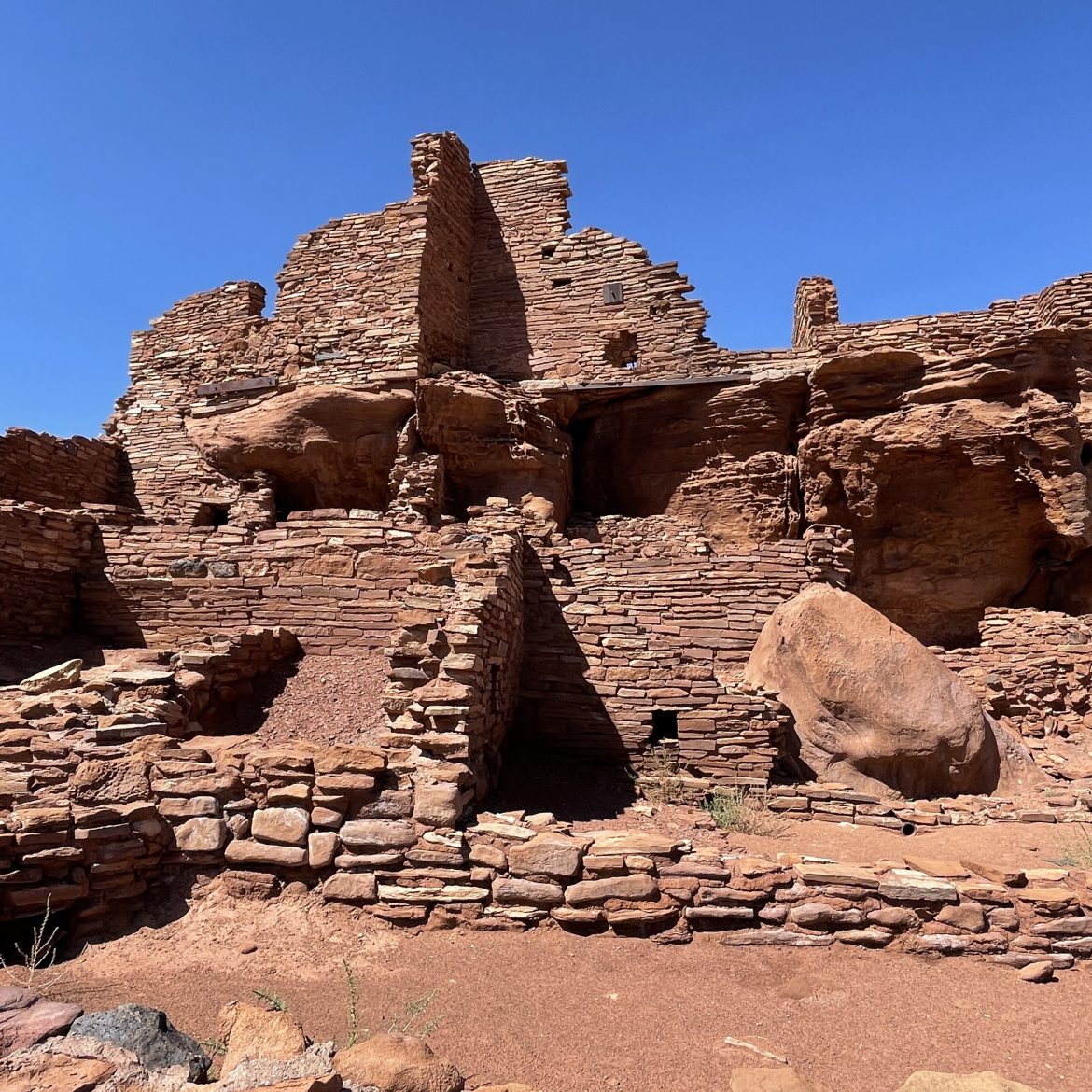
The buildings of the main pueblo with about 100 rooms, some several stories high, were entered by ladder from a hole in the roof. They have been vacant for some 700 years but for the 400 years preceding, a society apparently composed of unrelated groups managed to develop a rich culture despite the challenging environment.
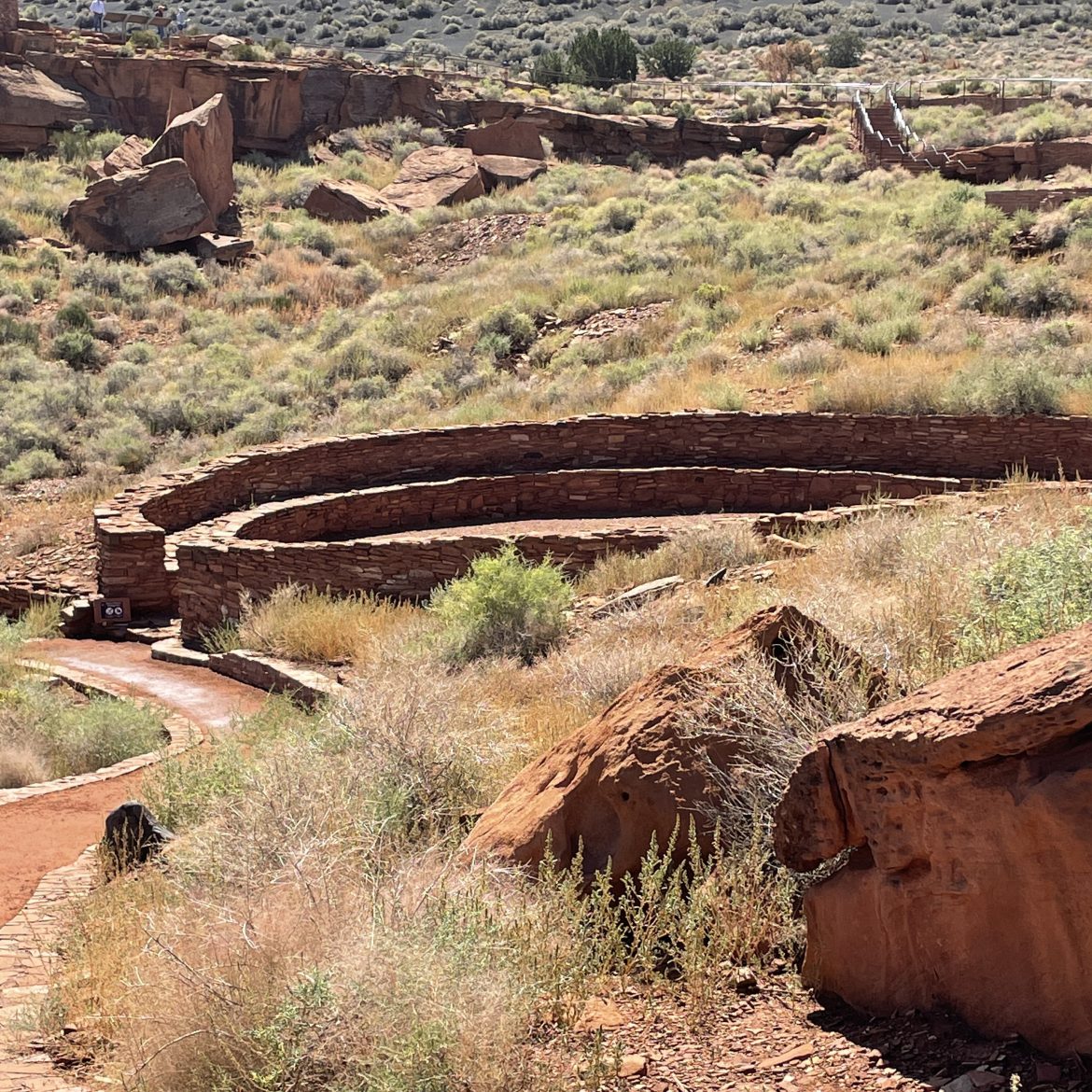
I pictured the round community center, filled with traders bringing their seashells, turquoise, copper bells, scarlet macaws, and over 125 kinds of pottery to trade for woven painted cloth.
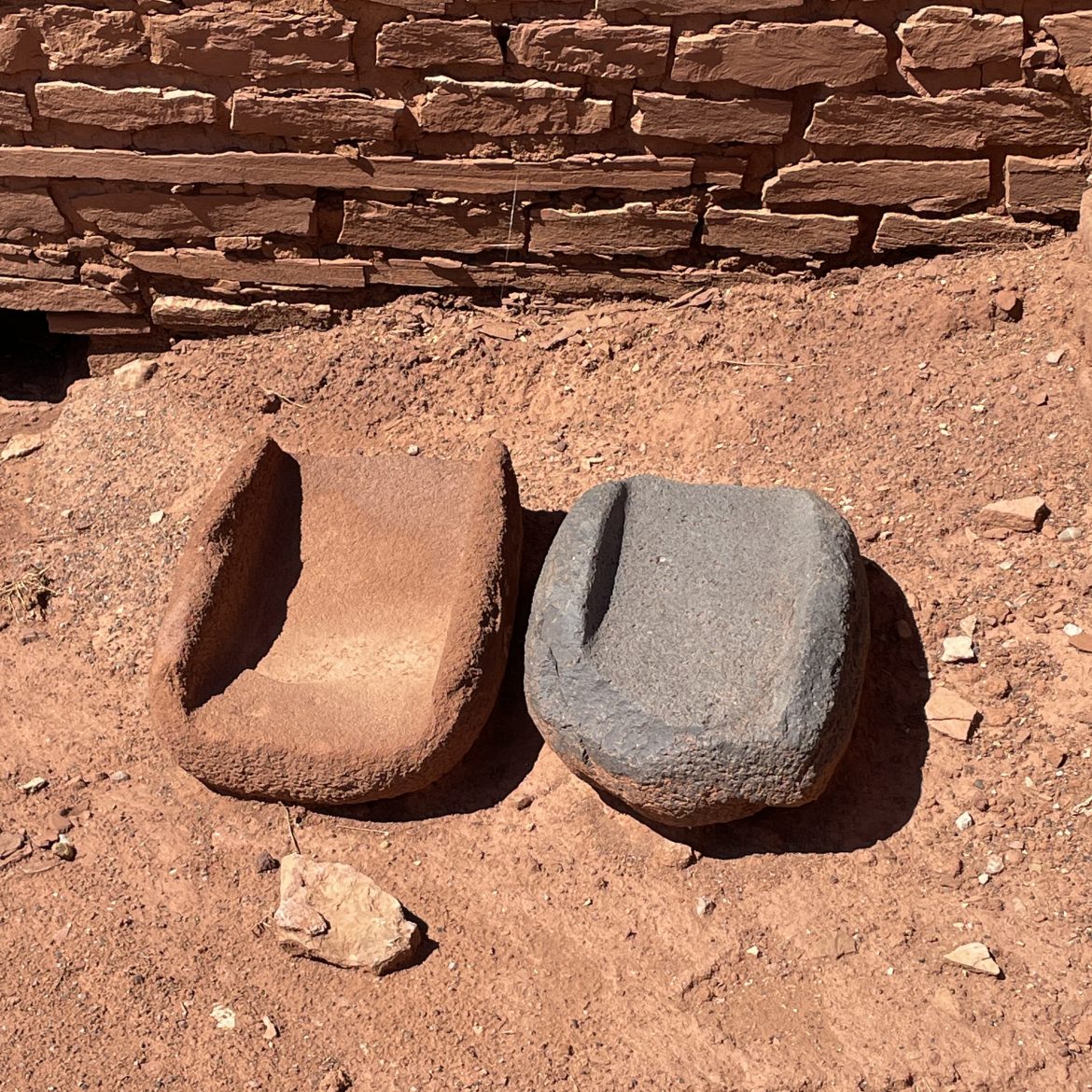
And then, like the other sites we visited, the people moved on. Two stone metates rested on the ground – left behind in the migration to other sites where perhaps the living was easier for two women who’d knelt to grind the corn from the nearby small garden plots.
Now, besides a few tourists and a couple of National Park Service staff, the only evidence of life I saw was this fat lizard shading himself from the heat of the day.
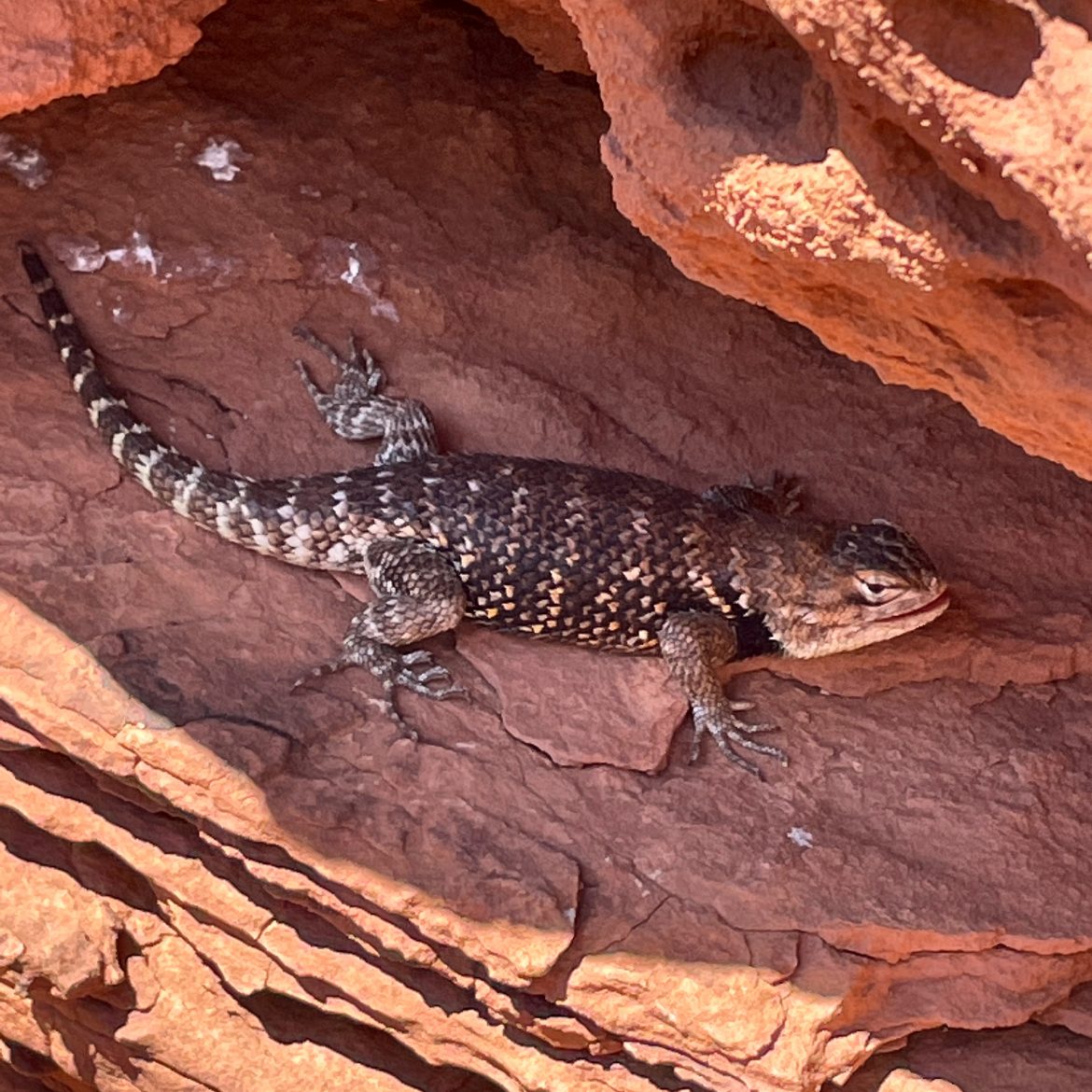
All photos copyright Judith Works
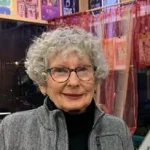

Behind the Story
There are so many places in our own country that are unfamiliar to many of us. This was new to me. Thanks for taking us there.